Any visit to Kentucky should include at least one bourbon distillery tour. Kentucky is the birthplace of bourbon and, according to the Kentucky Distillers’ Association, Kentucky produces 95 percent of the world’s supply of bourbon.
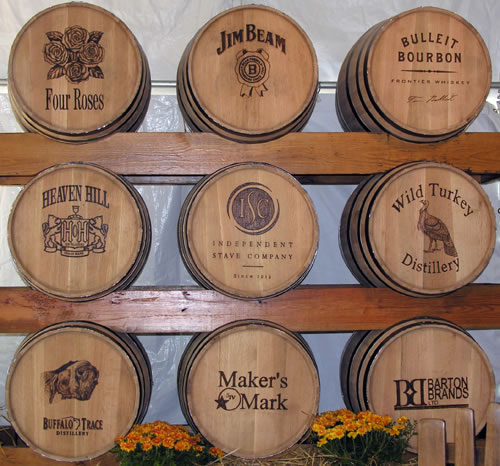
Here are some simple facts you should know about bourbon:
- Bourbon is America’s only native spirit, as declared by Congress in 1964.
- Bourbon must be made with a minimum of 51 percent corn, aged for at least 2 years in charred new oak barrels (the barrels can not be reused to make more bourbon), can’t have anything added besides distilled water (no flavorings or colorings can enter any bottles), and stored at no more than 125 proof.
- All bourbon is whiskey, but all whiskey is not bourbon.
- Bourbon tastes stronger and sweeter than other whiskeys. That’s because it’s distilled from the key ingredient of corn.
- Bourbon production has increased more than 120 percent since 1999.
- People tend to describe bourbon as being woody, grainy, sweet, fruity, or spicy. Flavors like vanilla, caramel, leather, orange, tobacco, or honey are common.
Now at this point, you may be asking yourself – “What’s all this talk about bourbon got to do with a BEER blog?” Since the 1990’s, modern brewers have explored the use of wood chips and wooden barrels (bourbon, wine, sherry, etc.) for adding complex flavors and depth to beer. What started as basically an experimentation by these modern brewers has grown to one of the most recent significant and fastest growing trends in the brewing industry. There are even numerous beer festivals throughout the world these days whose sole focus is wood and barrel-aged beers.
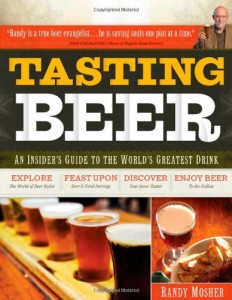 As pointed out by Randy Mosher in his book, Tasting Beer: An Insider’s Guide to the World’s Greatest Drink – “Stainless steel suits the squeaky-clean nature of international lager perfectly, but if you love the funky depths of a truly handmade beer, wood can offer that extra dimension… Wood contains chemicals that dissolve in the beer over time, which can add woody, oaky, and other flavors to beer… Over a period of many months, one of these substances, lignin, transforms into vanillin, which is why vanilla notes are often found in whiskey and other barrel-aged spirits… The bourbon industry uses the expensive charred-oak barrels only once for bourbon, so when emptied, they are relatively cheap to purchase. They can be great for aging beer.”
As pointed out by Randy Mosher in his book, Tasting Beer: An Insider’s Guide to the World’s Greatest Drink – “Stainless steel suits the squeaky-clean nature of international lager perfectly, but if you love the funky depths of a truly handmade beer, wood can offer that extra dimension… Wood contains chemicals that dissolve in the beer over time, which can add woody, oaky, and other flavors to beer… Over a period of many months, one of these substances, lignin, transforms into vanillin, which is why vanilla notes are often found in whiskey and other barrel-aged spirits… The bourbon industry uses the expensive charred-oak barrels only once for bourbon, so when emptied, they are relatively cheap to purchase. They can be great for aging beer.”
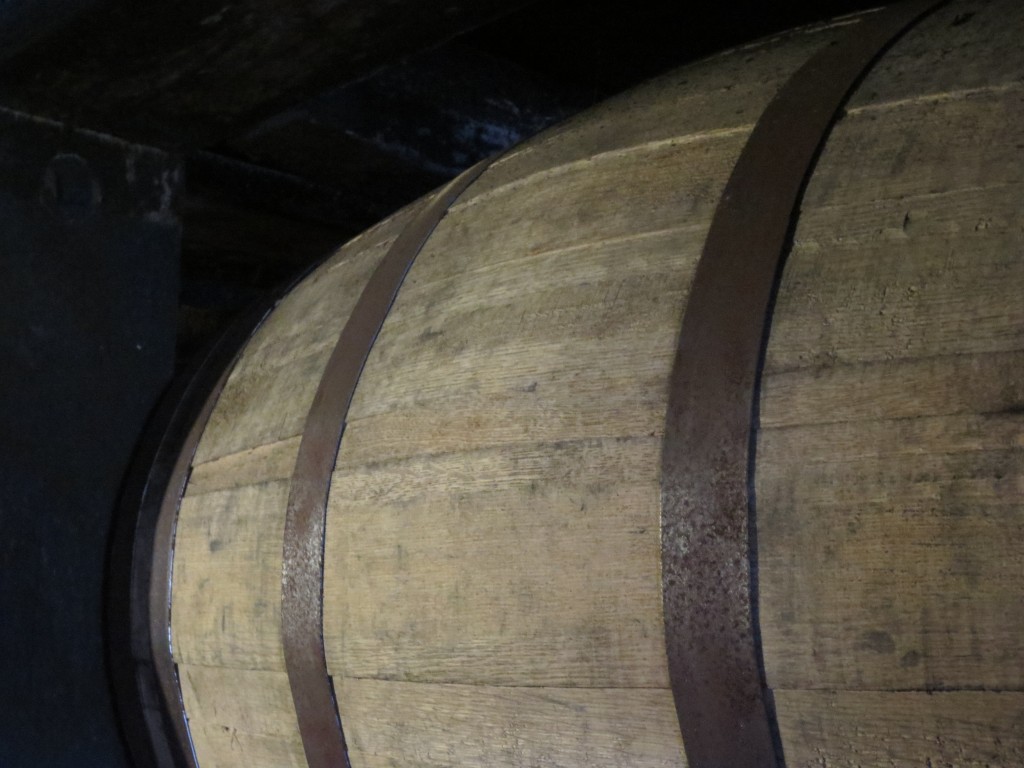
Not all beers benefit from barrel aging. Strong and/or dark beers are usually the best candidates (with the exception of lambics). The impact of wood and barrel aging for certain beers can be amazingly intense and complex experience. I’ve reviewed examples of wood and barrel aged beers, including De Molen Hel & Verdoemenis (Hell and Damnation) Misto (aged in Wild Turkey bourbon barrels) and Great Divide Oak Aged Yeti Imperial Stout (aged on new French and American oak chips). Hence, I relished my opportunity to visit one of the sources for bourbon barrels used by beer brewers and the creator of some of the finest bourbon – Austin Nichols Wild Turkey. Also, this was a great opportunity to partially pay back my wonderful wife – who is allergic to beer but loves bourbon.
Creating bourbon consists of these seven basic steps:
-
Grain Handling and Milling – A combination of corn, rye, and barley grains are selected. Corn must be a minimum of 51%. Wild Turkey emphasizes rye grain in the combination. Exact blend ratio is a closely guarded secret.
- Mashing and Malting – Grains are cooked in Kentucky water. Once ready, an existing sour mash is added to start the fermentation process.
- Fermenting – Yeast turns the malt starches into sugar and a fermented mash similar to unfiltered beer.
- Distilling – The liquid mash is poured into a continuous still that
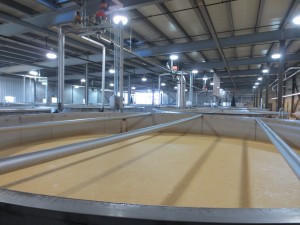
Once ready the liquid from the fermented mash will be pumped to a continuous distiller. vaporizes the liquid at a high temperature. This vaporization removes water content. The vapor is converted back to liquid and distilled again.
- Filling – After distillation, the spirit is poured into new, charred white oak barrels.
- Aging – Filled barrels are stored for aging.
- Bottling – The Master Distiller checks each barrel and decides when it is mature enough for bottling. Selected barrels are poured through a filtering machine. Bourbons from different barrels are usually blended to achieve a desired flavor profile. The filtered, blended bourbon is bottled.

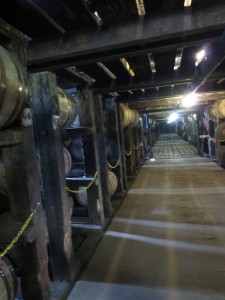
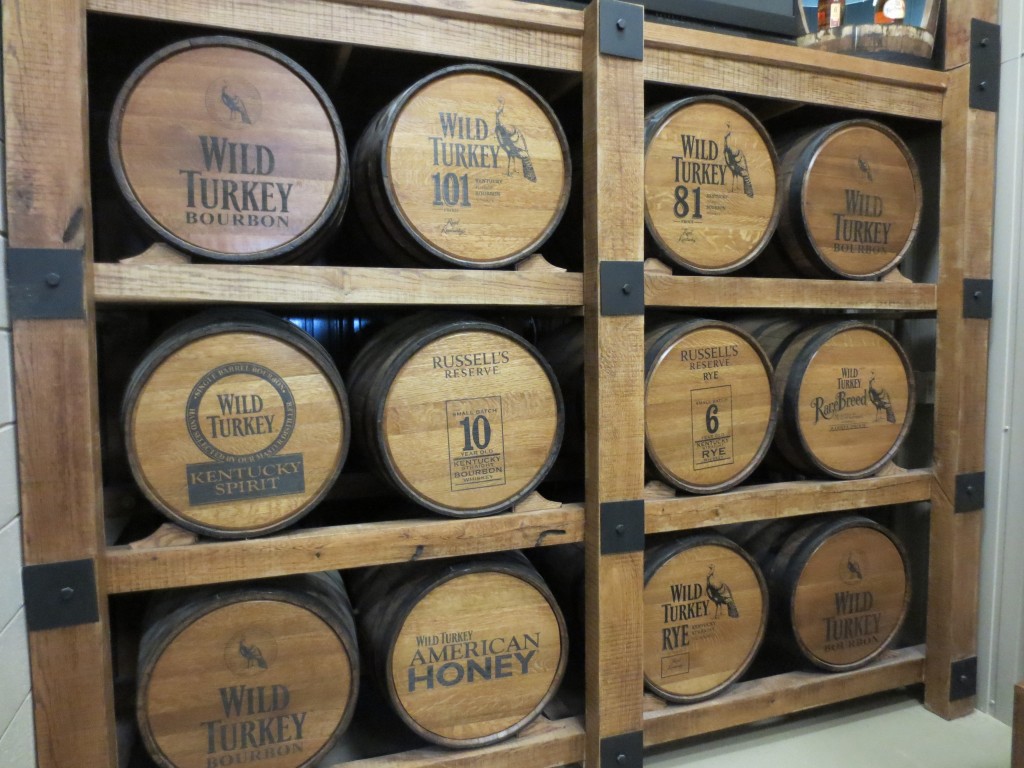
One of the great things about taking a distillery tour is that you get to try samples after the tour! By law, each person is limited to 2 small samples. Fortunately, there were three of us so we shared and each got to sample six different Wild Turkey products. I didn’t keep tasting notes for each but I definitely enjoyed all the samples. A few bottles even managed to make it to the car to bring home. My next trip to Kentucky will be planned to ensure enough time to complete the entire Kentucky Bourbon Trail.
If you have a chance to take a tour at Austin Nichols Wild Turkey, I highly recommend you do so. The tour is fun and informative and the samples at the end are delicious. And don’t forget, every time you drink some bourbon, you are helping to empty a barrel that can be used for making bourbon barrel-aged beer!
Stayed tuned for my next blog entry about a brewery that opened just a few months ago and kicked things off with a Gold Medal win at the Great American Beer Festival.
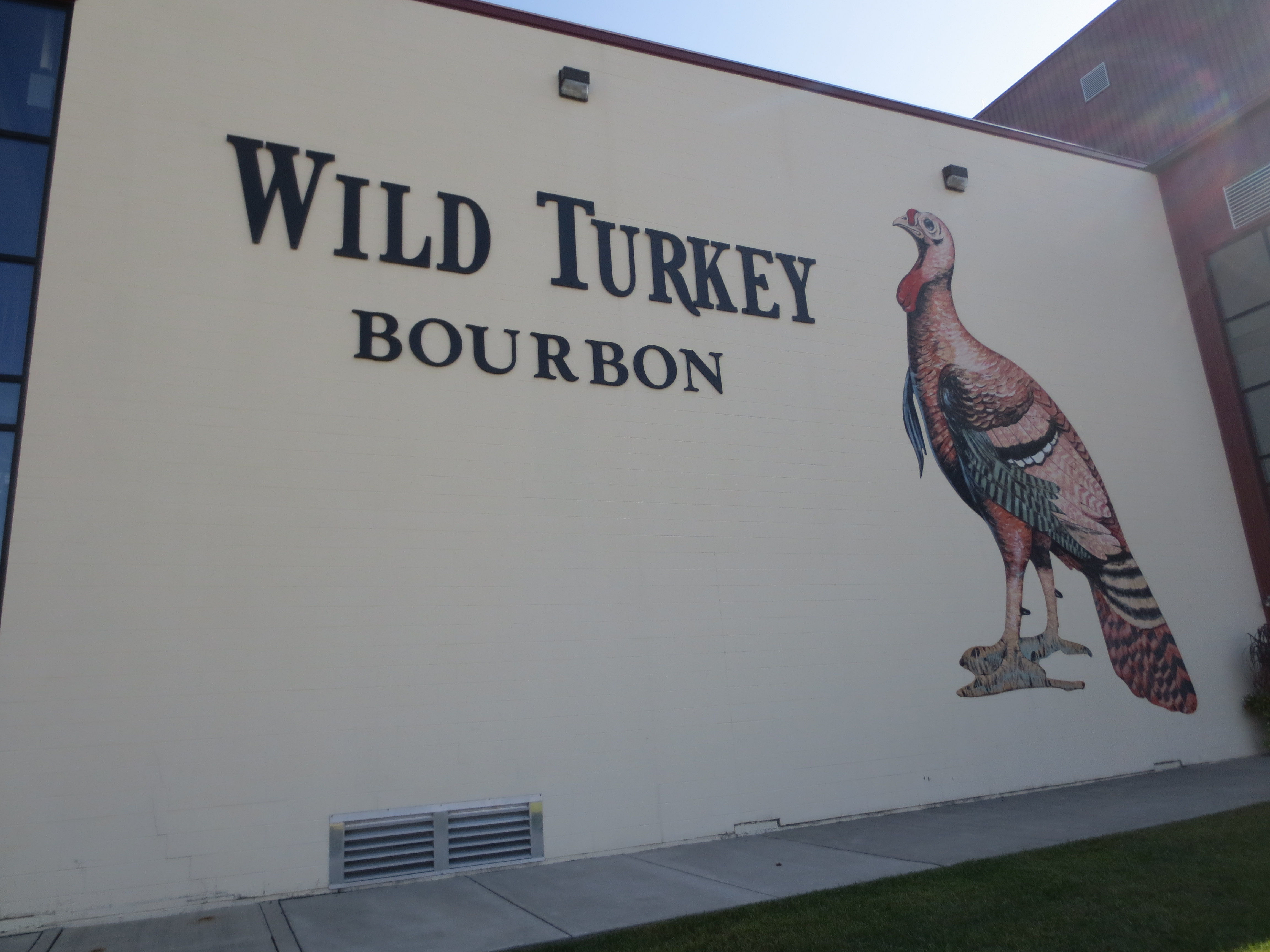
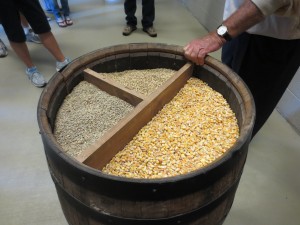
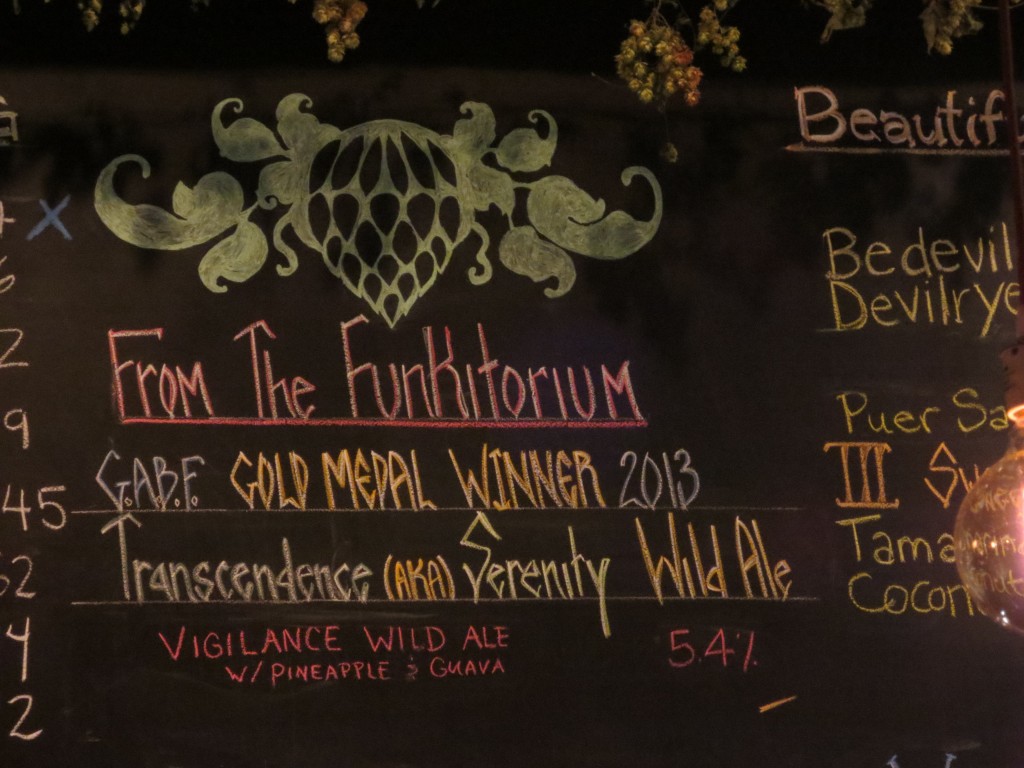
One thought on “Austin Nichols Wild Turkey – Lawrenceburg, KY”
Comments are closed.